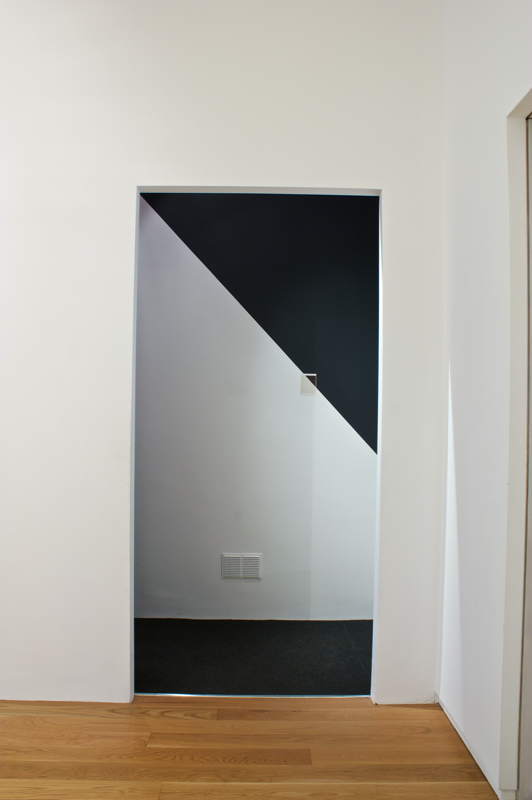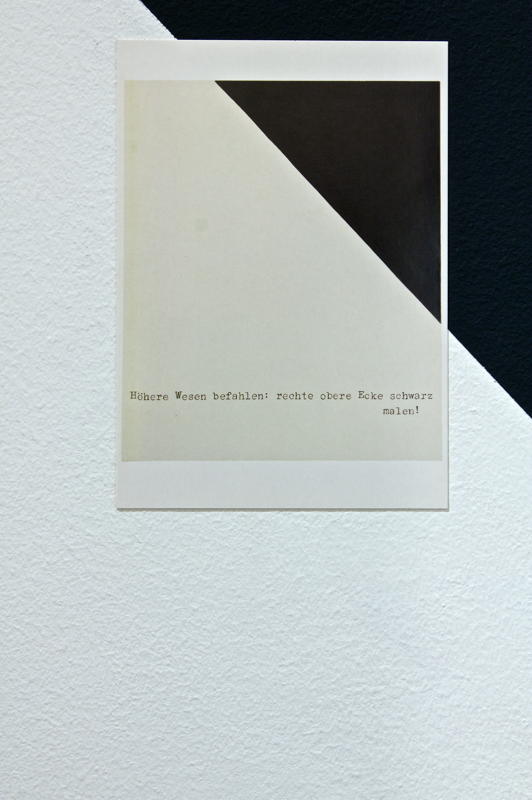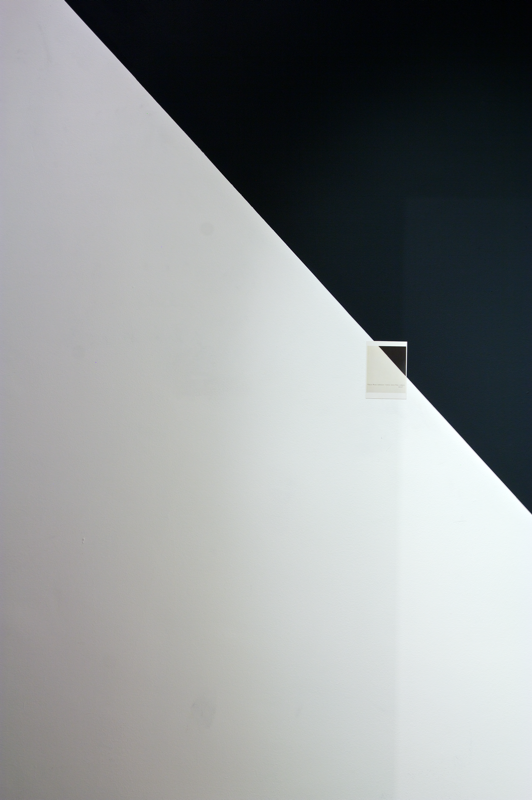
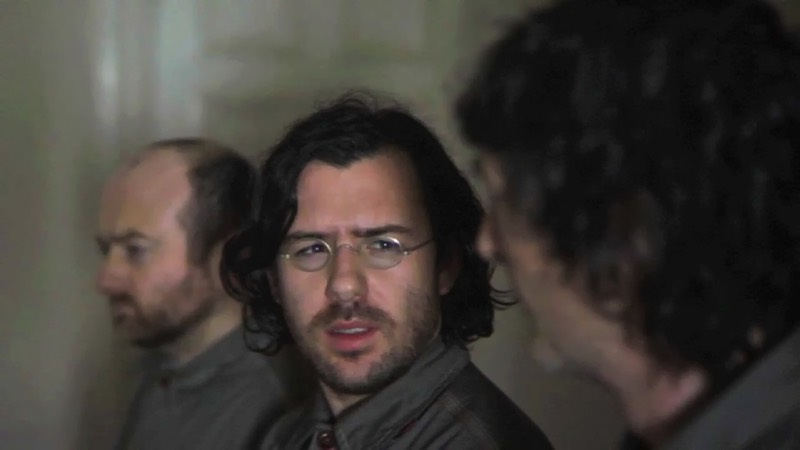
The Owl of Minerva is the title of a Walker and Walker installation at Dublin City Gallery, the Hugh Lane curated by Michael Dempsey. It centered on their film Mount Analogue Revisited, a reworking of Rene Daumal’s book ‘Mount Analogue’. Accompanying the film was a body of new work which addresses both the concerns of the film, its siting in one of two adjoining spaces, and a response to the work of Barry Flanagan in SILÂNS that was seen concurrently in an associated gallery space.
Walker and Walker’s film 'Mount Analogue Revisited', is a reworking of Rene Daumal’s book ‘Mount Analogue’ it was was Daumal’s final work and remained uncompleted due to the author’s premature death. The book is an unfinished story of a voyage to an unknown island, where the voyagers seek an improbable mountain which is seen as a means to link Heaven and Earth. Central to this book and the inception of the voyage, is a text about a symbolic mountain which was written by one of the protagonists but was challenged by another as being factually based.
Walker and Walker take as a starting point for their film, a short passage from the book, where upon the boat’s arrival at the shores of an island, its crew are escorted to a municipal building and asked by an official there to give an account of who they are and the purpose of their visit. Within the confines of this meeting, Walker and Walker fabricate a conversation between three of the crew members, the official and the author himself. They speak of the difficulties involved in making a journey to a superior world other than our own, where the truth cannot not exist, given the limits of reason and rationality. The events play out through dialogue within a single room, which serves to ground the fantastical nature of the film.
Although the film holds true to the book, it is not a literal adaptation, for the conversation that ensues references a broad number of writers, such as Novalis, Stanislaw Lem, Edger Allen Poe, Maurice Blanchot, Hermann Hess, William James. All of whom serve to inform a proposition for the loosening of the limits of rationality. The ending remains unresolved as the viewer is left unaware if the voyagers arrival at this place is instigated by the inhabitants of the island or by their own efforts. It is an adventurous philosophical tale, encompassing poetic passages, leading to a spiritual quest, which borders on science fiction.
Accompanying the film is a body of new work which addresses both the concerns of the film and the two adjoining spaces, in which the film and the work are presented; a black box and a white cube; suggestive of day and night, or lucidity and obscurity. Within this binary structure, Walker and Walker introduce a third element at play, a consideration of the notion of a threshold space; which brings together the before and after in a becoming, instead of separating them.
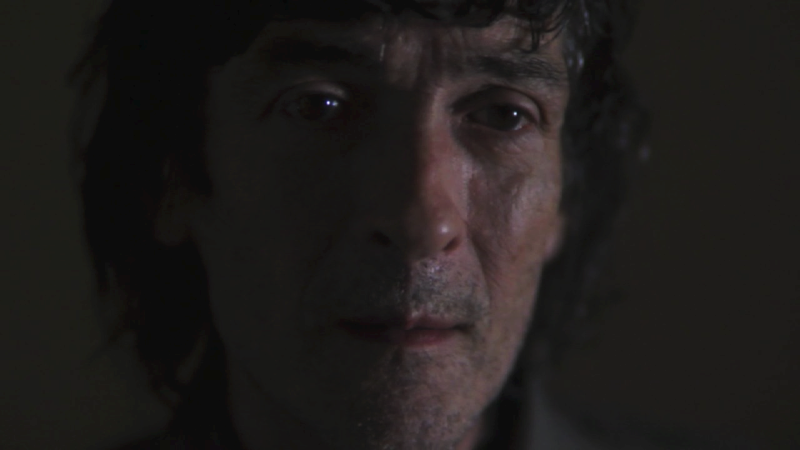
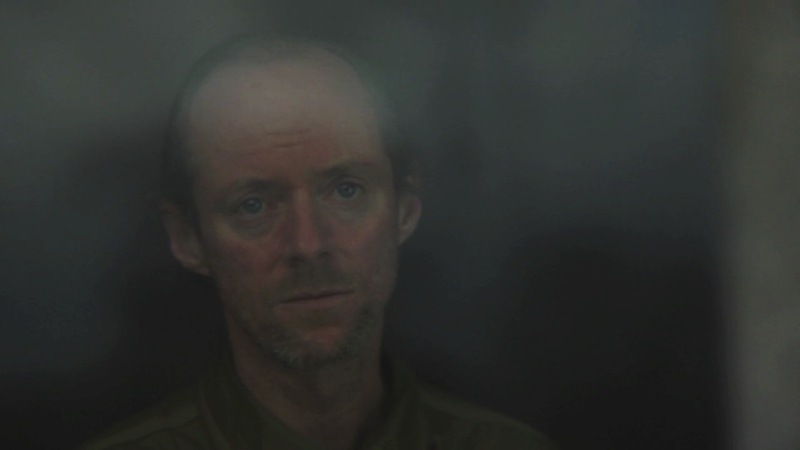
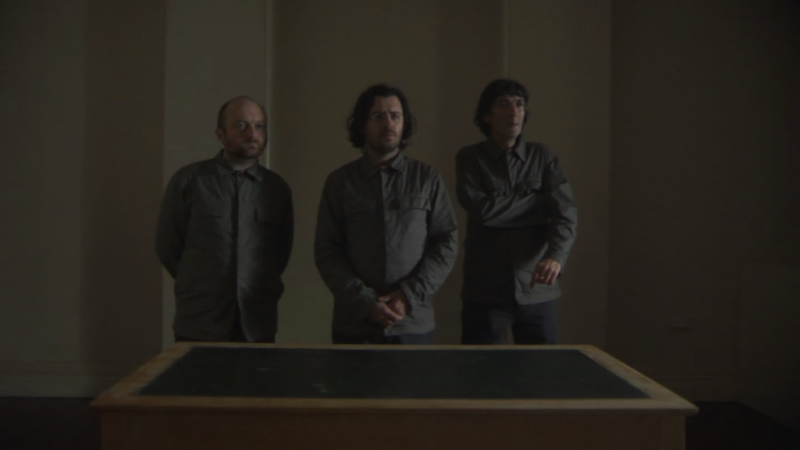
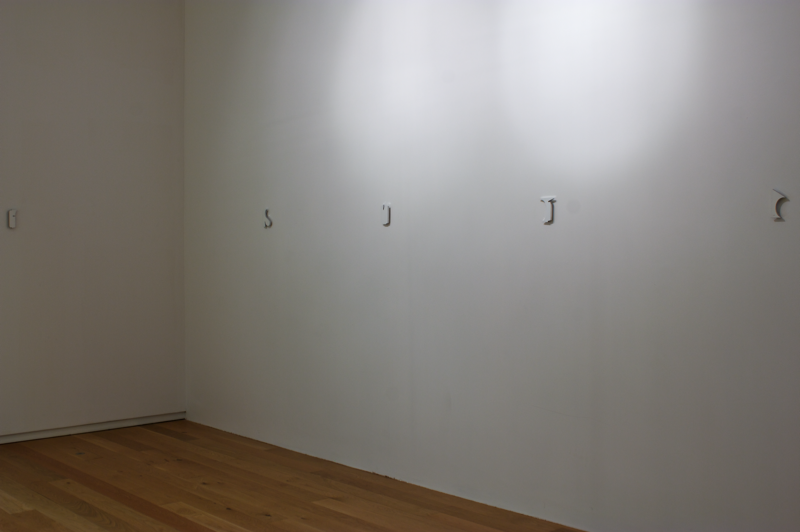
Mounted on the wall, a series of prepositions and conjunctives; ‘if’, ‘or’, ‘do’, ‘is’, and ‘to’ are mounted where the center of each of these words, is cut out in sheet aluminum, creating a series that opens out the possibility of an understanding of these words, creating a small circular narrative in the space between the two letters; if only this had happened as opposed to that, to take action or not, to go here or there.
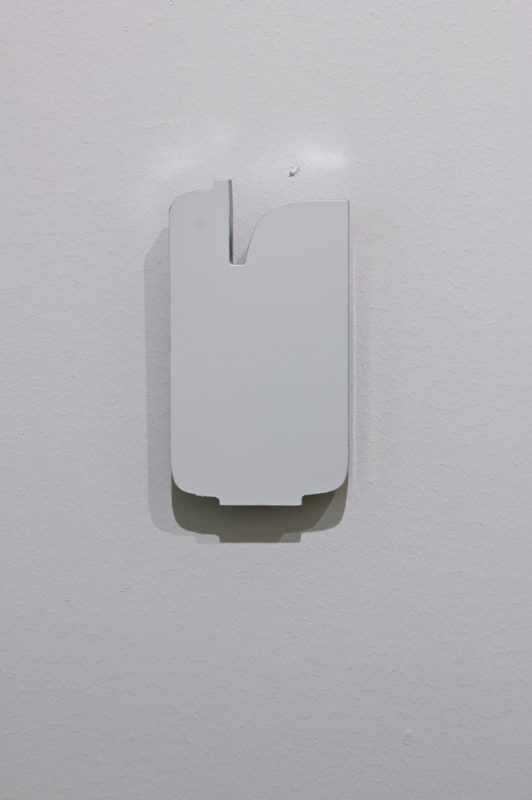
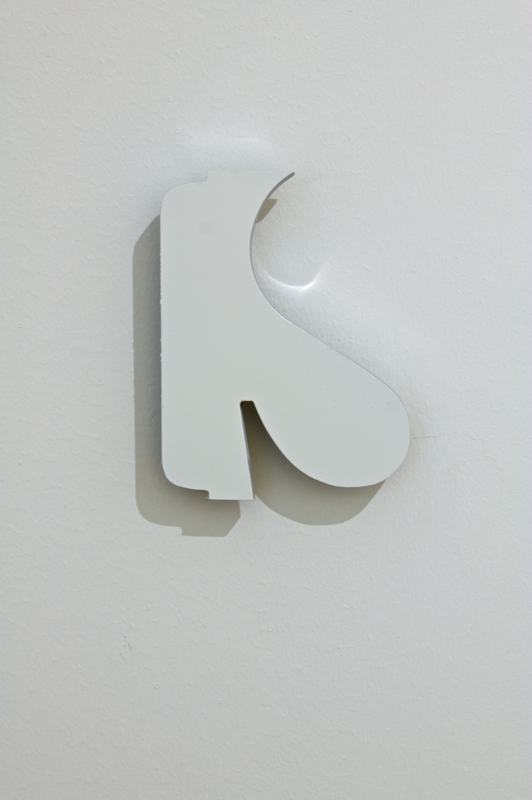
Echoing the crew awaiting the appropriate circumstances to enable them to enter the shores of Mount Analogue, a taxidermy owl ‘The Owl of Minerva spreads its wings with the falling of the dusk’ sits perched high above. Clearly it will never fly but as the title declares, it awaits a certain moment when the conditions are right, creating an enduring interval in the moment itself.
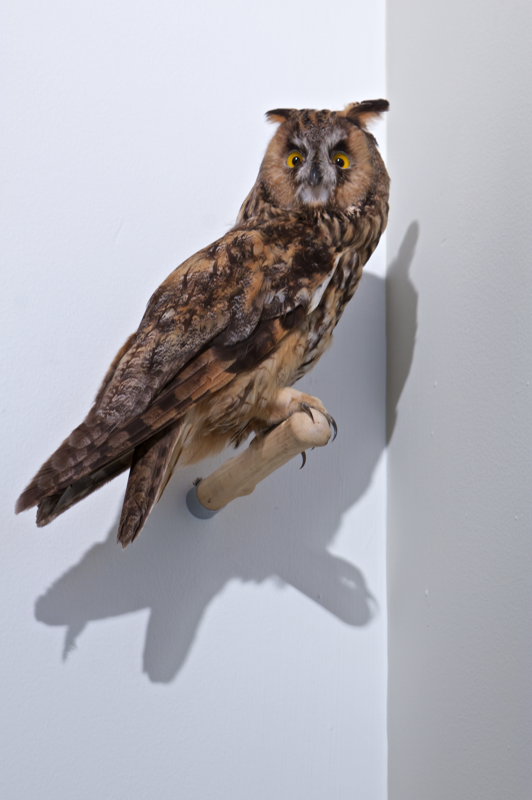
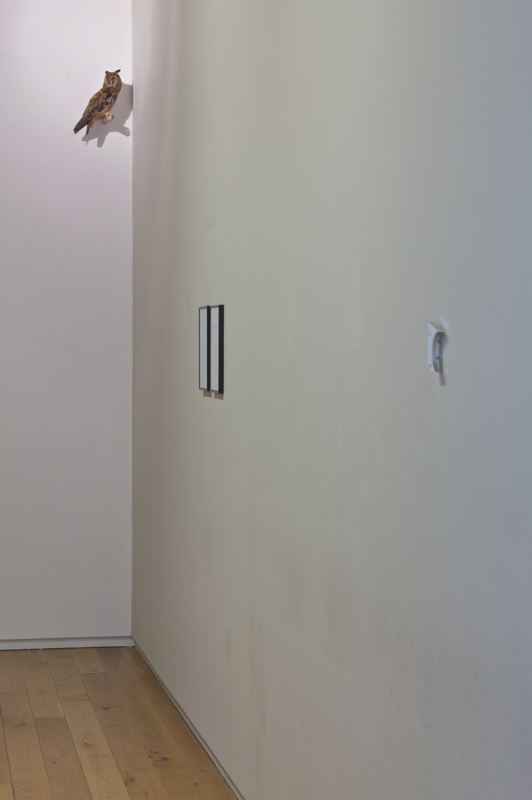
Other works shown are 'One Night Only' a neon sign of the same wording, which goes on for the exact duration of one night only during the course of the exhibition.
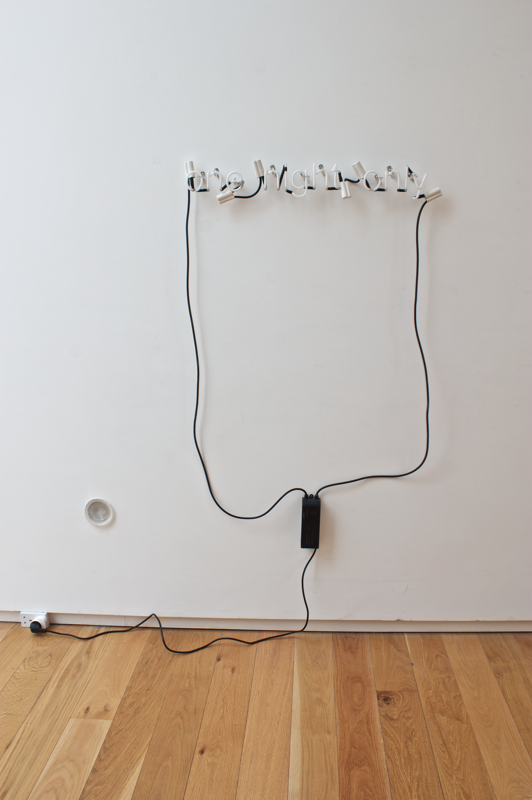
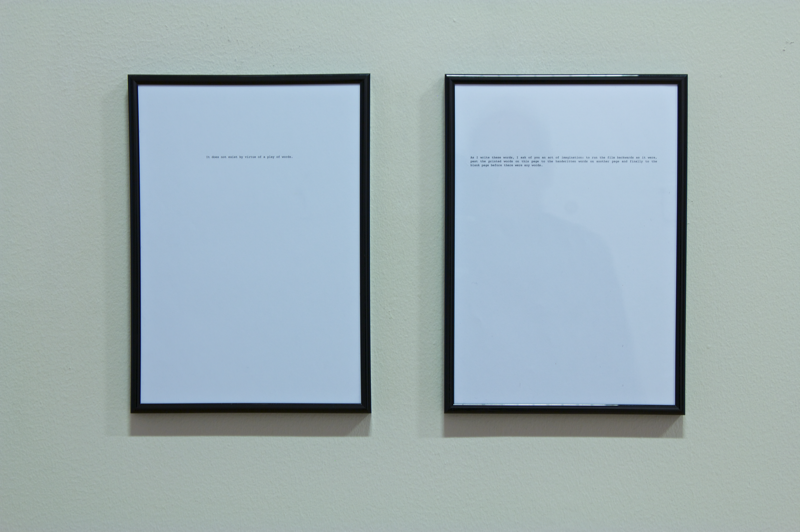
Play, Acts I and II 2012,
A Print diptych
'It does not exist by virtue of a play of words.'
'As I write these words, I ask of you an act of imagination: to run the film backwards as it were, past the printed words on this page to the handwritten words on another page and finally to the blank page before there were any words.'
A Print diptych
'It does not exist by virtue of a play of words.'
'As I write these words, I ask of you an act of imagination: to run the film backwards as it were, past the printed words on this page to the handwritten words on another page and finally to the blank page before there were any words.'
Articulated in a corridor which functioned as the entrance to a black box space where the film Mount Analogue Revisited was being screened, a postcard of a Sigmar Polke painting is fixed to the gallery wall. The postcard bears the text “Hohere Wesen befahlen : rechte obere Ecke schwarz malen! / Higher beings commanded: paint upper right hand corner black!”. The black area of the top right hand corner of the card was extended onto the gallery wall with black paint. An autonomous work, by Polke and now also by Walker and Walker as 'Proposition adhered to', it also functioned in this context as a poster for the film, which addresses the concept of higher beings.
